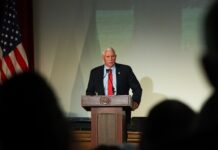Slippery Rock University created a Campus Inclusion Response Team (CIRT) and continues to work on its diversity and inclusion strategic plan to promote equity, diversity and inclusion on campus and in the community.
The university recently formed the CIRT that is designed to take action when incidents of bigotry, harassment or intimidation by or toward people of the community occur, according to an email from SRU Communication.
SRU President William Behre said that this response team has been in the works for a while. Vice-Chancellor and Chief Diversity, Equity and Inclusion Officer Denise Pearson advised that each Pennsylvania State System of Higher Education (PASSHE) schools build one of these teams, according to Behre.
“How this system works is someone experiences what they think is a biased incident and they report it,” Behre said. “Then someone in our system, Dr. Wilmes or his designee, reviews these things and says, ‘Well that is a serious-enough incident that we’re going to activate this team.’”
Behre said after the semester, he and the team will analyze the cases to consider what they can learn and do better in the future.
“There’ll be tweaks when we realize that you know that it didn’t work out like we thought it would,” Behre said. “…It’s a work in progress, everything is a work in progress.”
Permanent members of CIRT will also complete bias training prior to serving on the team, Behre said. Student and faculty representatives have not yet been appointed.
SRU has been working with CREDO since September to establish an equity, diversity and inclusion strategic plan. Terrence Mitchell, special assistant to the president for diversity and inclusion, said SRU spent most of the fall 2020 semester preparing their strategic plan and now they are “actually doing the work.”
Recently appointed to the SRU position last year, Mitchell said diversity work is important and that SRU has been “doing equity and inclusion work for as long as [he] can see,” and that is what drew him to Slippery Rock.
“People think that diversity is just about those people who are marginalized,” Mitchell said. “But people who are wanting to have a full, well-rounded experience, they’re looking for that information, regardless of whether or not a student is from a marginalized background.”
The university expects to review the first draft of the diversity and inclusion strategic plan by April, according to Behre.
SRU recently joined the National Association of Diversity Officers in Higher Education (NADOHE) to further its efforts in equity and inclusion on campus. According to its website, NADOHE strives to produce evidence through research to inform diversity initiatives, identify practices, provide professional development for diversity officers, inform and influence national and local policies and create networking opportunities.
Behre ensures that the university’s efforts will go beyond just Black History Month.
“The diversity strategic plan is not a Black History Month thing, in fact, very few of [these] things are Black History Month things,” Behre said. “They are just efforts that make sense at the beginning of Black History Month to draw attention to … Black History Month is an inflection point to say, ‘Okay, how are we doing, what have we done?’”
Highlighted in an email from the Office of the President on Feb. 5, SRU hired Clitha Mason as its first Frederick Douglass Institute Scholars Fellow to support its mission and develop a curriculum. Behre said the university intends on continuing the Frederick Douglass Scholar Program beyond this initial hire.
SRU launched an anti-racism and social justice resource webpage last semester. Behre said the President’s Commission on Racial and Ethnic Diversity recommended the creation of this webpage to provide students the ability to learn about anti-racism efforts and allyship.
“These things aren’t endings points,” Behre said. “They all become kind of a quilt of efforts. I don’t think there’s any one thing that is going to be the thing [that works]. I think it’ll be a series of things and different students will approach it in different ways.”
Behre said the ultimate goal of all diversity work is to improve the outcomes for students through “fundamentally improving graduation rates.”
In order to keep a dialogue going about diversity and inclusion, Mitchell recommends that students “stay engaged” and talk to each other.
“A lot of times people just talk to people they’re comfortable with,” Mitchell said. “Talk to people you’re uncomfortable with, also.”







